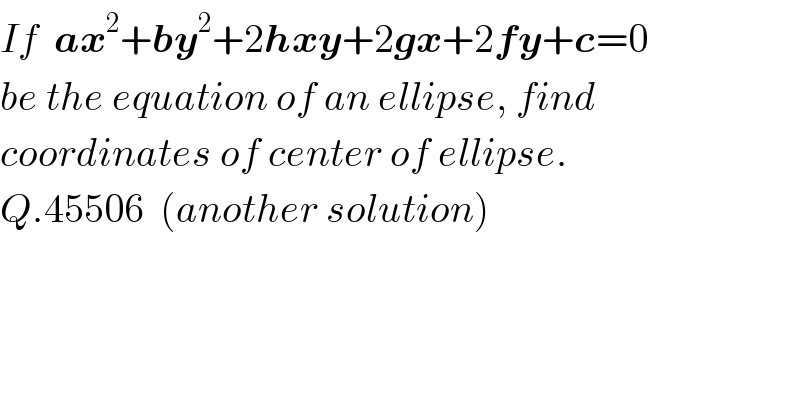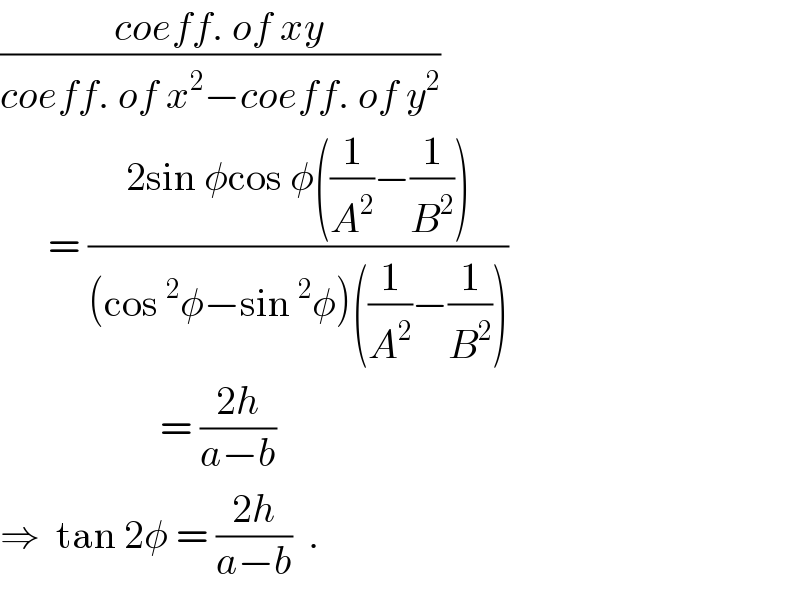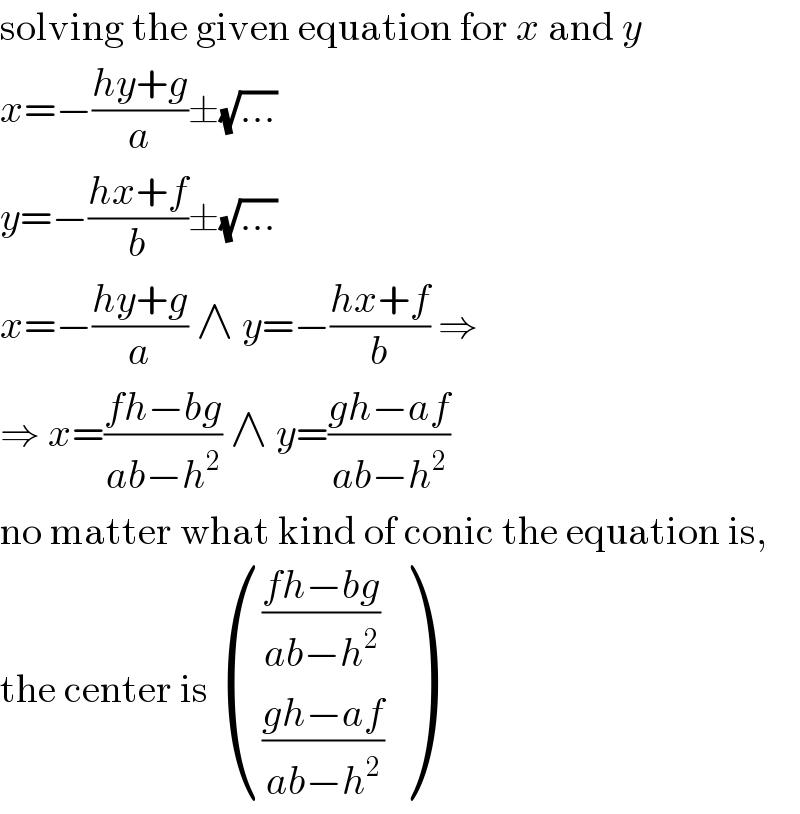Question Number 45565 by ajfour last updated on 14/Oct/18

Answered by ajfour last updated on 14/Oct/18
![let centre of ellipse be (p,q). Its equation in standard orientation be (((u−p)^2 )/A^2 )+(((v−q)^2 )/B^2 )=1 when rotated by angle φ, let (u,v) → (x,y) u−p = (x−p)cos φ+(y−q)sin φ v−q = (y−q)cos φ−(x−p)sin φ Then (([(x−p)cos φ+(y−q)sin φ]^2 )/A^2 ) +(([(y−q)cos φ−(x−p)sin φ]^2 )/B^2 ) −1 = λ(ax^2 +by^2 +2hxy+2gx+2fy+c) (for all values of x and y; whether the expressions on l.h.s. and r.h.s. be equal to zero or not) let y=q_(−) , then (x−p)^2 (((cos^2 φ)/A^2 )+((sin^2 φ)/B^2 )) = λ(ax^2 +bq^2 +2hqx+2gx+2fq+c) ((coeff. of x)/(coeff. of x^2 )) = ((−2p)/1) = ((2(hq+g))/a) ⇒ ap+hq = −g ....(i) similarly if x=p_(−) , then (y−q)^2 (((sin^2 φ)/A^2 )+((cos^2 φ)/B^2 )) = λ(ap^2 +by^2 +2hpy+2gp+2fy+c) ((coeff. of y)/(coeff. of y^2 )) = ((−2q)/1) = ((2(hp+f))/b) ⇒ hp+bq = −f ....(ii) Now solving (i) & (ii) for p,q { ((ap+hq = −g )),((hp+bq = −f )) :} p = ((fh−bg)/(ab−h^2 )) ; q = ((gh−af)/(ab−h^2 )) .](https://www.tinkutara.com/question/Q45568.png)
Commented by ajfour last updated on 14/Oct/18

Commented by MrW3 last updated on 14/Oct/18

Answered by MJS last updated on 14/Oct/18

Commented by ajfour last updated on 14/Oct/18

Commented by MrW3 last updated on 14/Oct/18

Commented by MJS last updated on 14/Oct/18

